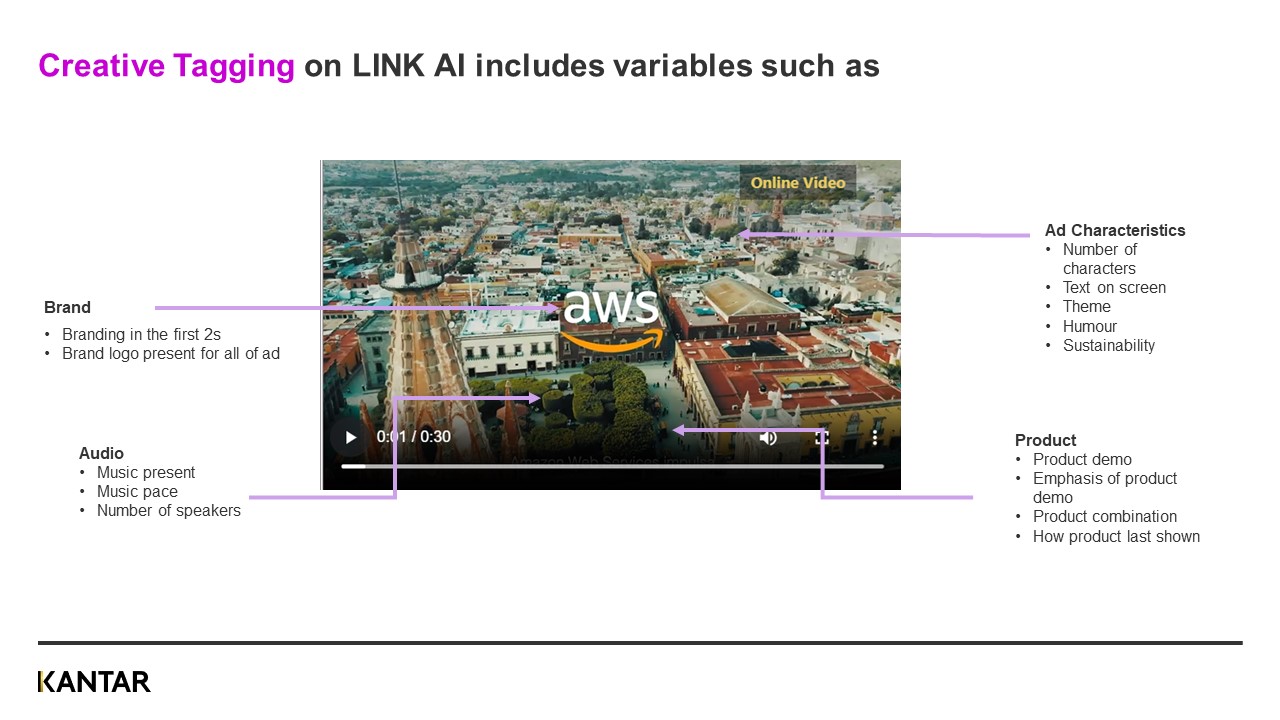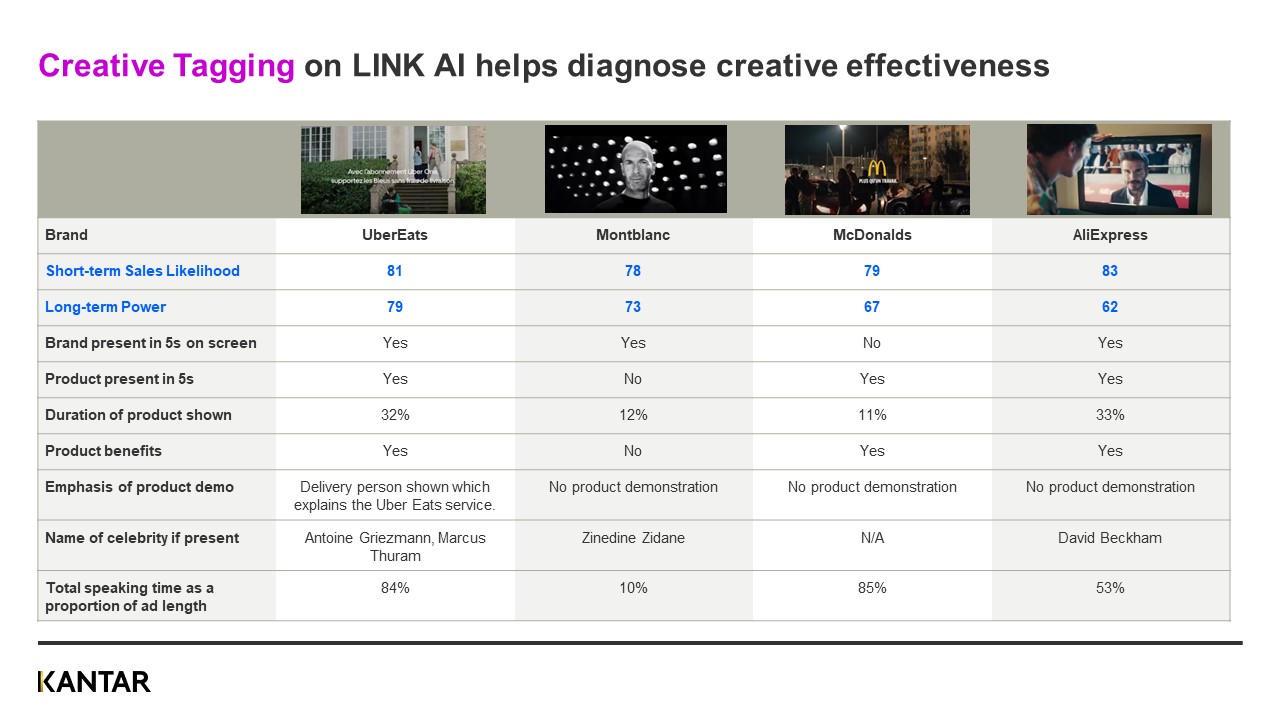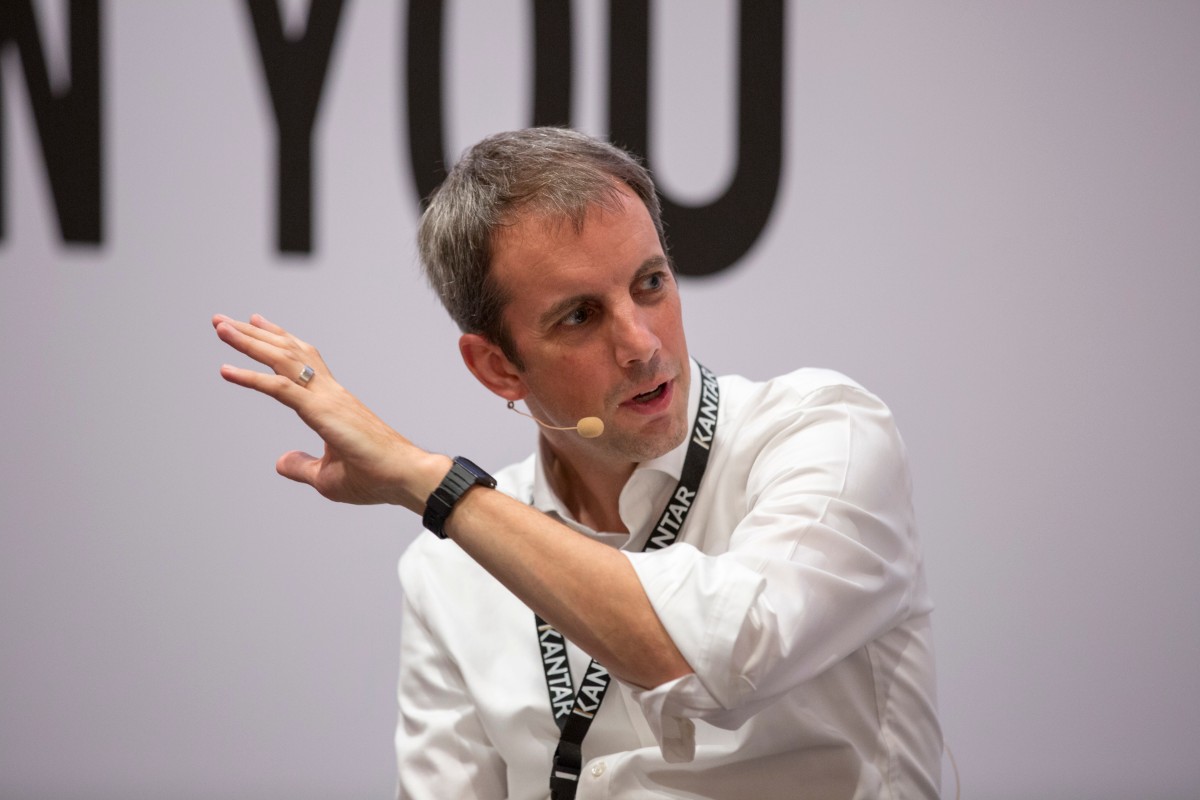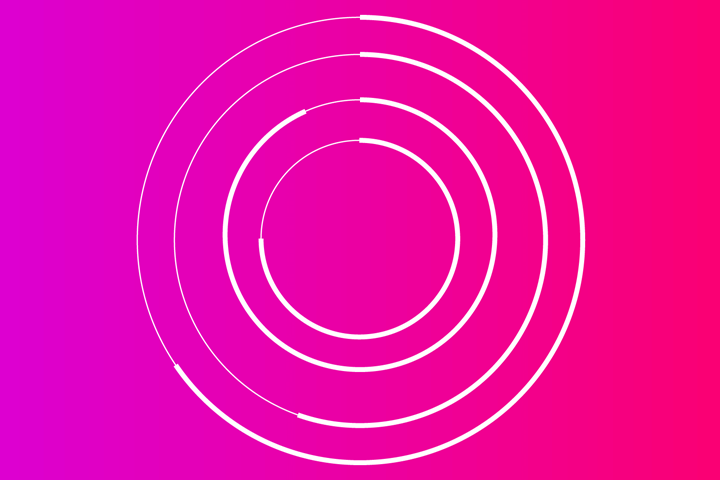When generative AI first appeared, the creative and marketing industry responded with both aspiration about the opportunities it brought as well as concerns about the implications for creativity. Is generative AI going to create a sea of sameness in marketing content? Will it allow human creativity to reach new heights? Since then, the rubber has hit the road, as marketers and creatives engage with generative AI technology and are seeing its (ever-evolving) possibilities and limitations firsthand, not only in creative production but also in creative measurement. How can marketers get the best of both worlds – ensuring that human insight and creativity aren’t compromised when leveraging the opportunities machines bring in creating and evaluating content at scale?
Unlocking scale
Generative AI tools are no longer limited to experimentation. Brands are actively using generative AI to produce advertising content. McDonald’s Japan have released this creative in collaboration with a digital art influencer, the American toys retailer Toys”R”Us used OpenAI’s Sora to tell its origin story, and the financial services company eToro aired a campaign with AI visuals during the Paris Olympics. In the creative production process, generative AI is currently used primarily in two ways. The first is to drive efficiency by increasing the speed of creation and/or decreasing the cost of production. Using AI to create what would have been possible without AI but faster and cheaper, unlocks an important opportunity – scale. With AI-enabled efficiencies in place, brands can create more content with the same amount of resources.
Interestingly, AI-enabled efficiency building is not a major award grabber. As AI’s ability to create efficiency is generally accepted, what is awarded is work that unlocks new possibilities by creating something that wouldn’t be possible without AI. A great example of this, awarded at Cannes Lions earlier this year, is the Adoptable campaign by Pedigree New Zealand and their creative partners Colenso BBDO. Pedigree have a purpose to end dog homelessness. The Adoptable campaign is human at heart, as AI is used primarily to scale the impact Pedigree have in this space. It leverages a generative AI model to create 3D images of dogs from shelter photos, a feat that would otherwise be time consuming not only for the production crew but also for shelter staff. These AI-generated images are dynamically placed in digital out of home placements, allowing Pedigree to quickly update the ads with new dogs once one is adopted.
Breaking new ground
The most award-decorated applications of AI are brilliant human ideas that that use AI capabilities in new, unexpected ways – allowing the audience to confront the previously unimaginable. Such work places AI at the core of the creative strategy and key to the connection it helps create with the audience. Orange’s WoMen’s football work challenges fans' preconceived notions about women’s football. The plot twist in the piece is driven by technology, making people reflect on their own biases. It is a great example of creative excellence that connects with people. Not only did it win 10 Cannes Lions, it is also Top 1% on both enjoyment and the ability to help build the brand in the long-term as evaluated by Kantar’s LINK+ ad testing solution. Another example of work that leveraged AI to emotionally engage the audience is “A message from Ella” from the telecommunications brand Deutsche Telekom.
Scaling measurement to deliver creative effectiveness
We have previously described how brands can dramatically increase their creative intelligence by using both survey and AI testing of campaign assets. This is increasingly essential given the far greater volume of assets being developed in modern campaigns. But as measurement is increasingly AI-driven, how can you ensure that there is enough human insight and oversight within your creative effectiveness process? If you’re embracing AI during your production process, how can you ensure you have appropriate measurement in place, rather than letting your production algorithms mark their own homework?
The best AI testing models have rich human insight at the core. The LINK AI model is trained on Kantar’s LINK+ survey insights for over 260,000 ads based on almost 40 million human interviews. LINK AI is therefore able to predict many of Kantar’s validated creative metrics, including branded Impact, short-term Persuasion, and long-term Power. This scale of underlying human insight delivers the accuracy, believability, stability and interpretability which AI models need. But in addition to impressive validations and awards, human users also need the reassurance of case studies, and their trust is enhanced when they can begin to understand how the model is working.
The recent Apple “Crush” ad for the iPad Pro met with a wave of backlash which could potentially have been avoided, had the ad been pre-tested with LINK AI. The LINK AI model was able to predict that the ad would struggle with branding (21st percentile) and building affinity (30th percentile) which would hold back its ability to build long-term brand Power (38th percentile). In contrast, the Samsung response ad for the Galaxy Tab S9 was much more enjoyable (70th percentile), delivering far stronger affinity (81st percentile) and Power (74th percentile).
Surfacing AI diagnostics to enhance creative insight at scale
Under the hood, LINK AI has always extracted over 20,000 features to drive its predictions of creative effectiveness. From this month we are now surfacing over 50 of these as key diagnostic features within LINK AI reporting. These features include very tangible things like "Brand presence", "Pace of ad" and "Human face shown”, etc., as well as intangible things like humor, and even higher order abstract concepts like sustainability.

These “creative tags” assist with analysis of individual ads, and are also especially powerful in meta analyses of ads at scale to help advertisers determine brand-specific creative best practice, or to enable publishers to generate platform-specific creative learning.
Importantly, they remove some of the “mystery” of how the predictive algorithm is working. This helps to reassure the human analyst, as well as providing diagnostic guidance of how the ad can be improved. In combination this means the human can focus more on how best to action the insight (via re-edit, or media upweight/ downweight), rather than worrying about how the machine arrived at its conclusion.
During the recent Euro 2024 football tournament, we deployed LINK AI to assess and diagnose the championship’s most effective ads. The overall star player was an Uber Eats ad in France. It combines the power of celebrity with humor and a product demo to cleverly show how an Uber subscription can help you avoid unwelcome delivery fees.

A potential danger of working with AI-generated creative tags is that they could result in agencies developing formulaic ads just to “tick all boxes”. LINK AI avoids this trap because the tags are simply used to diagnose and provide potential explanations of creative response. The model itself is looking much more widely to provide an holistic prediction of how the ad will likely work.
Even the most sophisticated AI predictive engines have some limitations, and Kantar’s creative experts are experienced in helping guide clients through their interpretation of results. Fundamentally, the AI model needs to have seen sufficient past records in order to understand likely patterns of response. There are some “watchout” areas where the creative elements can be harder for the AI to decode exactly as humans would. These include characteristics such as indirect humor, complex ideas or metaphors, and some cultural nuances. For example, while LINK AI can capture elements of an ad that build to humor (e.g. characters doing or saying something funny or self-deprecating), it may not understand a joke based on a local cultural reference. In these situations, a human analyst is key to interpretation.
The deployment of AI testing is rightly being used to deliver insight at far greater scale, while human testing continues to be deployed for high-profile hero assets, for high-spend campaigns, and for high-risk creative situations such as a brand launch, or a major brand repositioning.
This equation isn’t really altered by whether or not the content has been developed or enhanced by AI during the creative production process. Just because an ad was built with AI doesn’t mean an AI prediction algorithm can’t detect whether the ad will work or not.
Help your advertising rise above
AI in the creative production process doesn’t need to result in a sea of sameness. Deployed in creative ways the technology can rise above efficiency savings and break exciting new ground.
And nor does AI-led creative measurement need to result in formulaic advertising guidance. While AI is well placed to screen and diagnose for creative best practice, the greater scale of testing can also uncover rich new insights to help elevate campaign effectiveness.
The trick is ensuring human insights and oversight are integral components of the development, deployment and analysis process. And to fully understanding the strengths, limitations and capabilities of AI tools, so they can be leveraged to their maximum. To find out how LINK AI can help you achieve this and much more with your advertising request a demo today.



